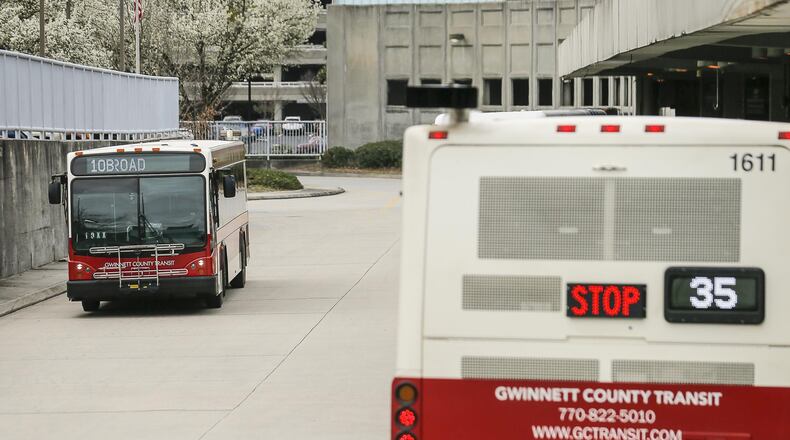Whether voters get to cast their ballots this year on transit expansion in Gwinnett County is now up to county commissioners.
Thursday night, a group of residents tasked with reviewing the county's transit plans agreed to pass their recommendations on to the elected officials. The commissioners will review their proposal and decide if and when voters could again go to the polls for a transit vote, after the last attempt to expand public transportation in the county failed last March.
The group used that proposal, known as Connect Gwinnett, as a basis for their plan. But members of the transit review committee said the new suggestions fill gaps in the previous proposal and focus on expanding service faster.
“We’re trying to get as much bang for our buck as quickly as we can,” said Laurie McClain, who chaired the committee. “I hope they put it on the November ballot.”
Compared to the plan voters rejected in March, the new proposal ensures more coverage would begin in the first 10 years after voter approval. It also adds more local bus routes, increased paratransit service and more regional connections, among other changes.
The group’s suggestions come after four months of study and debate.
“We’re waiting on county commissioners to see if those things are feasible,” said Farooq Mughal, a member of the committee. “It’s completely up to the board of commissioners.”
In the plan’s first five years, local bus service would more than double, to 16 routes from the existing seven. Areas that don’t currently have any local bus service — Snellville, Suwanee, Sugar Hill, Buford and the Mall of Georgia — would get it. And local bus service would run later into the evening and on Saturdays.
Two new all-day lines that would connect directly to MARTA stations from Gwinnett park-and-ride lots would begin service, and new park-and-ride lots in Dacula and Lawrenceville would open to create express routes for commuters along Ga. 316.
Additionally, the plan would add on-demand service in Snellville, Buford and Sugar Hill, similar to a microtransit service that was tested in Snellville last year that lets people call or use an app to request rides from a small passenger bus in a specific area that isn't dense enough for regular bus service. It would also expand paratransit service, door-to-door shared rides for eligible riders with disabilities, along the new routes.
By year 10, the plan would add two bus rapid transit routes in Gwinnett — one from the Doraville MARTA station to Sugarloaf Mills via Satellite Boulevard and another from Lawrenceville to Peachtree Corners. Bus rapid transit, also known as BRT, uses dedicated lanes and stations for the buses, so they feel more permanent than normal bus shelters and don’t get stuck in normal traffic.
Arterial rapid transit, or ART, also uses buses. The three proposed ART routes wouldn’t have their own lanes, but buses would have technology that could change traffic lights to green as they approach. They could also have their own lanes in some areas, where traffic gets backed up, so they wouldn’t have to wait long periods. Those routes, which stop less frequently than local bus service, would go from Snellville to the Mall of Georgia and I-985, from Doraville to Sugarloaf Mills via Ga. 141 and from Snellville to Peachtree Corners.
Some of the local bus routes that started in the first five years would be upgraded to BRT or ART. More local bus routes would also be added, including Sunday service on some routes. Four new express commuter routes would be added, and five new areas would get on-demand service. Paratransit would continue to be expanded.
And within 30 years, MARTA’s gold line would be extended to Jimmy Carter Boulevard. The final plan would also add two new BRT routes, from Snellville to the Indian Creek MARTA station along U.S. 78 and between Infinite Energy Center and the Mall of Georgia on Satellite Boulevard.
At the end of 30 years, there would be four BRT lines, seven ART lines, 17 local bus lines and additional express routes and on-demand transit areas. All told, the $12.3 billion proposal is projected to make transit service accessible to 56% of the county’s 2040 population. If left alone, the existing transit service would be accessible to only 14%.
It would add 157 miles of heavy rail, BRT and ART routes to the county and would connect to North Fulton, DeKalb and Hall counties, as well as Atlanta. If there was more money available from a proposed penny sales tax, the expansion could include heavy rail to Gwinnett Place Mall among other additional improvements.
“This is the best available plan,” said McClain, who on Friday announced she is running for the Gwinnett County Commission. “I’m very proud of what we’ve come up with. I really am.”
About the Author
Keep Reading
The Latest
Featured



